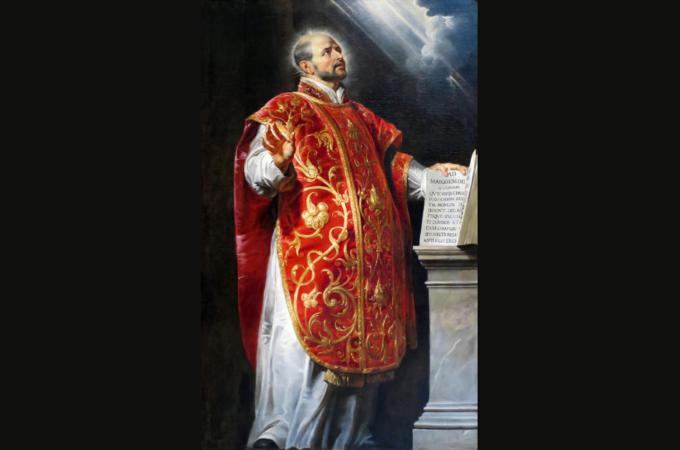Practicing mysticism
"I'm a practicing mystic!" A woman said that in one of my classes some years ago and it raised lots of eyebrows. I was teaching a class in mysticism and asked the students why the topic of mysticism interested them. Their responses varied: some were simply intrigued with the concept; others were spiritual directors who wanted more insight into what constitutes mystical experience; and a number of others were taking the course because their faculty advisor asked them to. But one woman answered: "Because I'm a practicing mystic!"
Can someone be a practicing mystic? Yes, providing both terms, practicing and mystic, are understood properly.
What does it mean to be a mystic? In the popular mind, mysticism is most often associated with extraordinary and paranormal religious experience, namely, visions, revelations, apparitions, and the like. Sometimes in fact this is the case, as is true of some great mystics like Julian of Norwich and Theresa of Avila, but these are exceptions. That's not the norm. Normally mystical experience is ordinary; no visions, no apparitions, no ecstasies, just everyday experience -- but with a difference.
Ruth Burrows, the renowned British Carmelite, defines mysticism this way: mystical experience is being touched by God at a level deeper than words, thought, imagination, and feeling. We have a mystical experience when we know ourselves and our world with clarity, even if just for a second. That can involve something extraordinary, like a vision or apparition, but normally it doesn't. Normally, a mystical experience is not a moment where an angel or some spirit appears to you or something paranormal happens to you. A mystical moment is extraordinary, but extraordinary because of its unique lucidity and clarity, extraordinary because for that moment we are extraordinarily centered, and extraordinary because in that moment we sense, beyond words and imagination, in some dark, unconscious, and inchoate way, what mystics call the indelible memory of God's kiss on our soul, the primordial memory of once having experienced perfect love inside God's womb before birth. Bernard Lonergan, using a different terminology, calls this the brand of the first principles on our soul, that is, the innate imprint of the transcendental properties of God, Oneness, Truth, Goodness, and Beauty, inside us.
We have a mystical experience when we are in touch with that part of our soul that was once touched by God, before we were born, that part of our soul that still bears, however unconsciously, the memory of that touch. Henri Nouwen calls this a dark memory of "first love," of once having been caressed by far gentler hands than we have ever met in this life.
We all have experiences of this to some degree. We all have mystical experiences, though we aren't all mystics. What's the difference between having a mystical experience and being a mystic? It's the difference between having aesthetic experiences and being an artist. All of us have deep aesthetic experiences and are at times deeply moved in our souls by beauty, but only a few persons become great artists, great composers, and great musicians, not necessarily because they have deeper experiences than the rest of us, but because they can give exceptional aesthetic expression to their experience. Aesthetic expression is always according to more or less. Hence anyone can become a practicing artist, even if not a professional one.
The same holds true for mysticism. A mystic is someone who can give meaningful expression to mystical experience, just as an artist is someone who can give proper expression to aesthetic experience. You can be a practicing mystic, akin to a practicing artist or practicing musician. Like a struggling artist, you can struggle to give meaningful, conscious expression to the deep movements you sense within your soul and, like an amateur artist, you will not be the Rembrandt or Picasso of the spiritual life, but your efforts can be immensely helpful to you in clarifying the movements within your own soul and psyche.
How, concretely, practically, might you practice being a mystic? By doing anything that helps you to more consciously get in touch with the deep movements of your soul and by doing things that help you steady and center your soul.
For example, in striving to get in touch with your soul you can be a practicing mystic by journaling, doing spiritual reading, taking spiritual direction, doing various spiritual exercises, such as the "Spiritual Exercises of St. Ignatius," and by prayer of any kind. In terms of centering and steadying your soul you can be a practicing mystic by more consciously and more deliberately giving yourself over to the biblical practice of Sabbath and by doing other soul-centering things like gardening, taking long walks, listening to good music, sharing wine and conversation with family and friends, making love with your spouse, holding a baby, visiting a person who is ill, or even just taking up a hobby that healthily breaks the obsession of your daily concerns.
There are ways of being a practicing mystic, even without taking a formal class on mysticism.
- Oblate Father Ron Rolheiser, theologian, teacher, and award-winning author, is President of the Oblate School of Theology in San Antonio, TX. He can be contacted through his website www.ronrolheiser.com.
Now on Facebook www.facebook.com/ronrolheiser



















